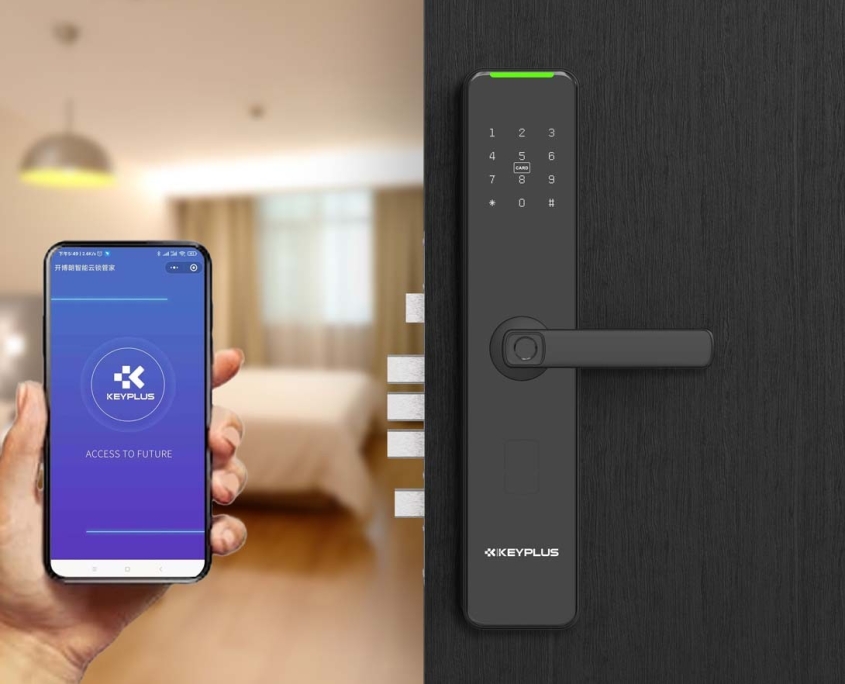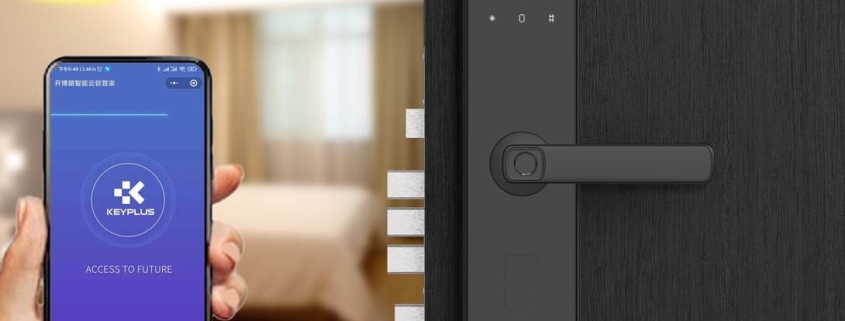What is the lifespan of a smart door lock?
Smart door locks promise convenience and enhanced security, transforming how we access our homes. But unlike traditional deadbolts that might last decades with a little oil, smart locks introduce complex electronics into the equation. So, how long can you realistically expect your smart lock to last? The answer, like the technology itself, is nuanced. Expect a well-maintained smart lock to deliver reliable service for 5 to 10 years, though several factors significantly influence this range.
Why Lifespan Matters: More Than Just Hardware
Forget comparing it solely to your smartphone or laptop. A smart lock’s lifespan isn’t just about when the circuit board fries. It’s a critical intersection of:
-
Physical Security: It must remain a robust barrier against physical attacks (picking, drilling, kicking).
-
Electronic Reliability: Batteries, motors, sensors, and wireless modules need to function consistently.
-
Digital Security: This is arguably the most crucial factor over time. Outdated software becomes vulnerable to hacking, potentially compromising your entire home.
Dispelling the “Forever Lock” Myth
Unlike a simple mechanical lock that might function (albeit less securely) for 20+ years, smart locks face unique challenges:
-
Battery Dependency: Most run on batteries (AA/AAA, CR123, or built-in rechargeables). Battery life per charge is different from the battery system’s lifespan. Constantly replacing batteries stresses compartments and internal contacts. Rechargeable batteries degrade over cycles (typically 2-5 years before significant capacity loss). Expect to manage batteries actively throughout the lock’s life.
-
Electronic Component Wear: Tiny motors that turn the bolt, sensors that detect fingerprints or proximity, and wireless radios (Wi-Fi, Bluetooth, Z-Wave, Zigbee) all have finite operational lives. Environmental factors like extreme heat, cold, humidity, and dust accelerate wear. Voltage fluctuations can also damage sensitive circuits.
-
Software Obsolescence: This is the silent killer. Manufacturers release firmware updates to patch security vulnerabilities and add features. Eventually, support ends. A lock physically working perfectly in 2030 might be riddled with unpatched exploits discovered in 2028, making it a significant security risk. A lock without security updates has effectively reached its functional end-of-life, regardless of hardware condition.
-
Cloud Service Dependency: Many locks rely on manufacturer cloud services for remote access, user management, and integration with other smart home systems. If the manufacturer discontinues the service (a real possibility over 5-10 years), key features may vanish overnight.
-
Physical Wear and Tear: Daily use – turning the handle, fingerprint smudges on readers, keypad presses, exposure to weather (for external components) – takes its toll. Seals can degrade, allowing moisture inside. Keypads can wear out. Mechanical bolts can jam if not maintained.
Factors Dictating Your Lock’s Longevity
-
Build Quality & Materials:
-
Exterior: High-quality metals (zinc alloy, stainless steel) resist corrosion, physical attacks, and weather better than cheap plastics. Look for robust weather sealing (IP ratings like IP65 indicate good dust/water resistance).
-
Interior: Quality internal components (motors, circuit boards, wiring) are less prone to early failure. Precision engineering ensures smoother operation and less stress on parts.
-
-
Installation:
-
Correct Alignment: A poorly installed lock, where the bolt doesn’t align perfectly with the strike plate, forces the motor to work harder. This causes premature motor failure and excessive wear on the bolt mechanism.
-
Secure Mounting: A loose lock housing rattles, stressing internal connections and potentially leading to malfunctions.
-
-
Environmental Conditions:
-
Extreme Temperatures: Intense heat can warp plastic, degrade batteries faster, and stress electronics. Severe cold can thicken lubricants, strain motors, and drastically reduce battery capacity. Choose locks rated for your climate.
-
Humidity & Moisture: Constant high humidity or direct water exposure (e.g., uncovered porch) can corrode contacts, damage circuit boards, and promote mold/mildew inside the lock. Superior weatherproofing is essential.
-
Direct Sunlight: UV radiation can degrade plastics and finishes over time, potentially warping components or fading keypads.
-
Dust & Debris: Sandy or dusty environments can clog fingerprint readers, keypads, and mechanical mechanisms.
-
-
Usage Patterns:
-
High Traffic: A lock on a busy family home’s front door will experience vastly more cycles (motor activations, keypad presses, handle turns) than one on a rarely used back door or a vacation home. More cycles mean faster wear.
-
Primary Access Method: Heavy reliance on the motorized bolt (e.g., constant auto-locking) stresses the motor more than manual bolt throws. Frequent fingerprint or keypad use wears those specific interfaces faster.
-
-
Maintenance:
-
Battery Management: Using high-quality batteries, replacing them before they are completely dead (prevents leakage), and cleaning contacts periodically is vital. For rechargeables, follow manufacturer charging guidelines.
-
Physical Cleaning: Regularly clean the exterior (especially readers and keypads) with appropriate, non-corrosive cleaners. Remove dirt and debris from the bolt area and strike plate. Lubricate the mechanical bolt and moving parts (not electronics!) with graphite powder or a manufacturer-recommended dry lubricant annually or as needed.
-
Software Updates: CRITICAL. Install firmware updates promptly when released by the manufacturer. This is your primary defense against evolving security threats. Enable automatic updates if available.
-
-
Technology Evolution:
-
New Standards: Wireless communication protocols (Wi-Fi 6/7, Bluetooth LE, Matter) and security standards evolve. An older lock might become incompatible with newer smart home hubs or lack support for essential modern security features.
-
Feature Support: Manufacturers may stop adding new features or integrations to older models long before they stop security updates.
-

Recognizing the End of the Road: When to Replace
Don’t wait for a complete failure. Watch for these signs:
-
Persistent Malfunctions: Frequent jamming, slow/unresponsive bolt operation, failed unlocks despite correct credentials, constant false alarms (tamper alerts).
-
Rapid Battery Drain: Needing new batteries weekly or monthly when it previously lasted months, indicating a failing component drawing excess power.
-
Physical Degradation: Visible cracks, severe corrosion, broken keypads or readers, damaged keyholes (if applicable), degraded weather seals.
-
Connectivity Issues: Constant disconnections from Wi-Fi or your smart home hub, unreliable remote access.
-
End of Software Support: The manufacturer officially announces no further security updates for your model. This is a major red flag.
-
Cloud Service Shutdown: Notification that the required cloud service is being discontinued.
-
Security Breach News: Reports of critical, unpatched vulnerabilities specific to your lock model.
Maximizing Your Smart Lock’s Lifespan: Proactive Steps
-
Research Before Buying: Prioritize build quality, weather resistance (check IP ratings), and the manufacturer’s reputation for long-term software support and security updates. Look for established players with a track record.
-
Professional Installation (Recommended): Ensures perfect alignment and secure mounting.
-
Diligent Battery Care: Use recommended types, change proactively, clean contacts.
-
Rigorous Updates: Treat firmware updates like essential home security maintenance. Never ignore them.
-
Regular Cleaning & Mechanical Lubrication: Keep it physically sound.
-
Appropriate Use: Avoid slamming the door or forcing the lock. Use manual bolt throws when convenient to spare the motor.
-
Monitor Manufacturer Communications: Sign up for emails or check their support site periodically for announcements about updates or end-of-life notices.
Conclusion: A Decade of Smart Security, With Caveats
A high-quality smart door lock, carefully selected for your environment, professionally installed, meticulously maintained, and kept rigorously updated, can reliably serve you for 7-10 years. However, view this lifespan differently from a traditional lock. The functional lifespan is often dictated by software support and digital security, not just physical wear. Treat your smart lock as a sophisticated electronic device guarding your home, not just a piece of hardware. Plan for eventual replacement driven by security needs as much as mechanical failure. By understanding the factors at play and committing to proactive care, you can maximize the value, convenience, and, most importantly, the security your smart lock provides throughout its serviceable life. When the time comes to replace it, you’ll be better equipped to choose a successor ready for the next era of smart home protection.



